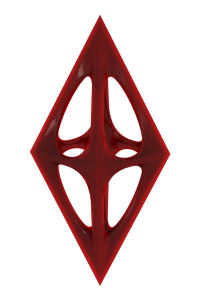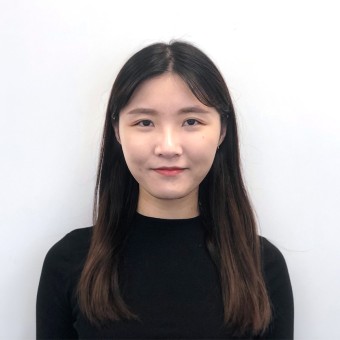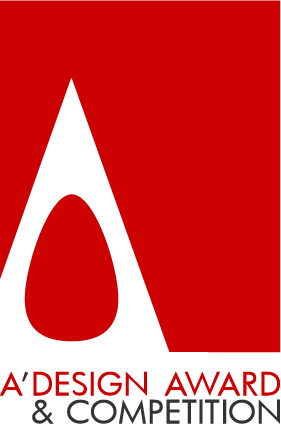
| THE AWARD |
| CATEGORIES |
| REGISTRATION |
| SUBMIT YOUR WORK |
| ENTRY INSTRUCTIONS |
| TERMS & CONDITIONS |
| PUBLICATIONS |
| DATES & FEES |
| METHODOLOGY |
| CONTACT |
| WINNERS |
| PRESS ROOM |
| GET INVOLVED |
| DESIGN PRIZE |
| DESIGN STORE |
| THE AWARD | JURY | CATEGORIES | REGISTRATION | PRESS | WINNERS | PUBLICATIONS | ENTRY INSTRUCTIONS |
Interview with Yichun Lin |
Home > Designer Interviews > Yichun Lin |
Editor Frank Scott (FS) from DesignPRWire has interviewed designer Yichun Lin (YL) for A’ Design Award and Competition. You can access the full profile of Yichun Lin by clicking here.

FS: Could you please tell us more about your art and design background? What made you become an artist/designer? Have you always wanted to be a designer?
YL: I’ve always been interested in the creative process, even as a child. Growing up, I enjoyed drawing and experimenting with different media. As I explored my passion for art, I discovered design as a way to merge creativity with problem-solving. Design felt like the perfect career because it allows me to express myself while helping others visually communicate their ideas.
FS: Can you tell us more about your company / design studio?
YL: My design studio focuses on creating visually compelling designs with an emphasis on both aesthetics and functionality. We work on a variety of projects ranging from branding to digital design, and we believe that each design should tell a story while meeting the client’s goals.
FS: What is "design" for you?
YL: For me, design is about solving problems visually. It’s not just about making things look good, but about understanding the needs of the audience and creating solutions that communicate effectively.
FS: What kinds of works do you like designing most?
YL: I enjoy designing projects that involve storytelling, such as branding and digital experiences. I love creating designs that evoke emotions and connect with people on a deeper level.
FS: What is your most favorite design, could you please tell more about it?
YL: One of my favorite designs is a branding project I worked on for a small business. The challenge was to create a unique visual identity that captured the essence of the brand. It was incredibly rewarding to see how the design helped the business grow and connect with its audience.
FS: What was the first thing you designed for a company?
YL: The first design I did for a company was a logo for a local coffee shop. It was a simple project, but it taught me a lot about brand identity and the importance of simplicity in design.
FS: What is your favorite material / platform / technology?
YL: I love working with digital tools, particularly Adobe Illustrator and Photoshop. I also enjoy exploring new technologies like augmented reality (AR) to create immersive design experiences.
FS: When do you feel the most creative?
YL: I feel the most creative when I am in a relaxed state, like when I’m outside in nature or during quiet moments at home. Being in a calm environment allows me to think more freely and come up with new ideas.
FS: Which aspects of a design do you focus more during designing?
YL: I focus on both the aesthetic and functional aspects of a design. It’s important that the design is visually appealing but also serves its purpose effectively.
FS: What kind of emotions do you feel when you design?
YL: I often feel excited and passionate when I’m designing. The process of creating something from scratch and solving visual challenges is very fulfilling.
FS: What kind of emotions do you feel when your designs are realized?
YL: When my designs are realized, I feel proud and accomplished. It’s amazing to see an idea come to life and know that it’s making an impact.
FS: What makes a design successful?
YL: A successful design is one that effectively communicates its message and solves the problem it was created for. It should be aesthetically pleasing, functional, and resonate with the intended audience.
FS: When judging a design as good or bad, which aspects do you consider first?
YL: I first consider the clarity of communication. Is the message clear? Does it serve its purpose? Then, I look at the aesthetics and how the design makes the audience feel.
FS: From your point of view, what are the responsibilities of a designer for society and environment?
YL: Designers have a responsibility to create sustainable and inclusive designs that are mindful of their environmental impact. We must also be aware of how our designs affect society and strive to make positive contributions.
FS: How do you think the "design field" is evolving? What is the future of design?
YL: The design field is constantly evolving, especially with advancements in technology. We are moving towards more immersive and interactive design experiences, like virtual and augmented reality. The future of design will likely be more focused on personalization and sustainability.
FS: When was your last exhibition and where was it? And when do you want to hold your next exhibition?
YL: My last exhibition was in August 2024 at the Orchid Exhibition, where I showcased ceramic artworks. It was a great experience, and I plan to hold my next exhibition in the near future, focusing on eye-themed artworks and digital design pieces.
FS: Where does the design inspiration for your works come from? How do you feed your creativity? What are your sources of inspirations?
YL: My design inspiration comes from many places—nature, travel, everyday experiences, and even dreams. I feed my creativity by staying curious, constantly learning, and experimenting with new techniques and media.
FS: How would you describe your design style? What made you explore more this style and what are the main characteristics of your style? What's your approach to design?
YL: I like to challenge visual intensity, using vibrant colors to capture attention. My style tends to focus on bold and striking visuals, often playing with contrasts and textures to create an engaging experience. I believe design should provoke emotions and spark curiosity, so I incorporate elements that stand out and leave a lasting impression.
FS: Where do you live? Do you feel the cultural heritage of your country affects your designs? What are the pros and cons during designing as a result of living in your country?
YL: I live in Astoria, New York, but I’m originally from Taiwan. My cultural heritage definitely influences my design work, especially in my appreciation for simplicity, balance, and harmony in design. Living in a multicultural environment like New York exposes me to diverse influences, which I incorporate into my work. However, sometimes it can be challenging to balance traditional elements with modern aesthetics.
FS: How do you work with companies?
YL: I work closely with companies to understand their vision, goals, and target audience. We collaborate to create designs that not only look great but also communicate the brand’s message effectively. It’s a process of constant feedback and iteration.
FS: What are your suggestions to companies for working with a designer? How can companies select a good designer?
YL: My suggestion to companies is to choose a designer who understands the brand’s vision and can create a consistent visual language. It's important to look at their portfolio and see if their design style aligns with your company’s values. Open communication and clear expectations are key to a successful collaboration.
FS: Can you talk a little about your design process?
YL: My design process usually begins with research and gathering inspiration. I then create sketches or mockups to explore different ideas, followed by feedback from the client. After refining the concept, I move on to the final design, making sure it aligns with the goals and vision.
FS: What are 5 of your favorite design items at home?
YL: Some of my favorite design items at home are: a modern lamp I picked up during my travels, a minimalistic chair that blends comfort and style, a custom-made sculpture, a set of vibrant ceramic mugs, and a framed print from an artist I admire.
FS: Can you describe a day in your life?
YL: A typical day for me starts with a cup of coffee and some quiet time to plan my tasks. I spend the morning working on design projects, often collaborating with clients. In the afternoon, I might attend meetings or research new trends. Evenings are my time to relax and recharge—sometimes I go for a walk, or I read to feed my creativity.
FS: Could you please share some pearls of wisdom for young designers? What are your suggestions to young, up and coming designers?
YL: My advice for young designers is to stay curious and never stop learning. Don’t be afraid to experiment and make mistakes—they’re a part of the process. Building a strong portfolio and networking with others in the industry is essential, as is finding your own unique style.
FS: From your perspective, what would you say are some positives and negatives of being a designer?
YL: The positives of being a designer are the creative freedom and the ability to solve problems in unique ways. It’s rewarding to see your work make a real-world impact. The downside can be the pressure of tight deadlines and managing multiple projects at once, but that’s part of the challenge.
FS: What is your "golden rule" in design?
YL: My golden rule is to always prioritize clarity and simplicity. A good design should communicate clearly and not overwhelm the audience.
FS: What skills are most important for a designer?
YL: I believe creativity, problem-solving skills, and the ability to communicate effectively are essential for a designer. Technical skills with design software are important, but a designer’s ability to understand and address the needs of the client is key.
FS: Which tools do you use during design? What is inside your toolbox? Such as software, application, hardware, books, sources of inspiration etc.?
YL: I mainly use Adobe Illustrator, Photoshop, and InDesign for my design work. For ceramics, I rely on traditional tools and materials like clay, glazes, and kiln equipment. I also keep a collection of design books and magazines to stay inspired.
FS: Designing can sometimes be a really time consuming task, how do you manage your time?
YL: I manage my time by breaking down my tasks into smaller, manageable chunks and setting clear priorities. I also make sure to take breaks to avoid burnout and stay focused.
FS: How long does it take to design an object from beginning to end?
YL: The time it takes can vary depending on the complexity of the project. For a simple design, it may take a few days, while a more intricate project could take weeks or even months.
FS: What is the most frequently asked question to you, as a designer?
YL: The most frequent question I get is, “What’s your design process?” People are always curious about how I approach a project from start to finish.
FS: What was your most important job experience?
YL: My most important job experience was working with a well-known brand on a major redesign project. It taught me the importance of collaboration and meeting high expectations, while also allowing me to stretch my creative skills.
FS: Who are some of your clients?
YL: Some of my clients include small businesses, startups, and nonprofit organizations. I’ve also worked with brands in the fashion and tech industries.
FS: What type of design work do you enjoy the most and why?
YL: I enjoy branding and identity design the most because it allows me to create a comprehensive visual language that tells a brand’s story and communicates its values.
FS: What are your future plans? What is next for you?
YL: In the future, I plan to expand my design studio and collaborate with more international clients. I’m also looking into incorporating more interactive design elements into my work.
FS: Do you work as a team, or do you develop your designs yourself?
YL: I work both independently and as part of a team. While I enjoy the freedom of working solo, I also appreciate collaborating with other designers and clients to bring fresh ideas to the table.
FS: Do you have any works-in-progress being designed that you would like to talk about?
YL: I’m currently working on a few exciting design projects, including a rebranding for a nonprofit and a new digital art series that explores visual storytelling.
FS: How can people contact you?
YL: People can contact me through my website or social media platforms, where I regularly post updates about my work and projects.
FS: Any other things you would like to cover that have not been covered in these questions?
YL: I would just like to say that design is an ongoing journey of learning and discovery. It’s important to remain open to new ideas and continually push yourself to grow as a designer.
FS: Thank you for providing us with this opportunity to interview you.
A’ Design Award and Competitions grants rights to press members and bloggers to use parts of this interview. This interview is provided as it is; DesignPRWire and A' Design Award and Competitions cannot be held responsible for the answers given by participating designers.
Press Members: Register and login to request a custom interview with Yichun Lin.
| SOCIAL |
| + Add to Likes / Favorites | Send to My Email | Comment | Testimonials |

